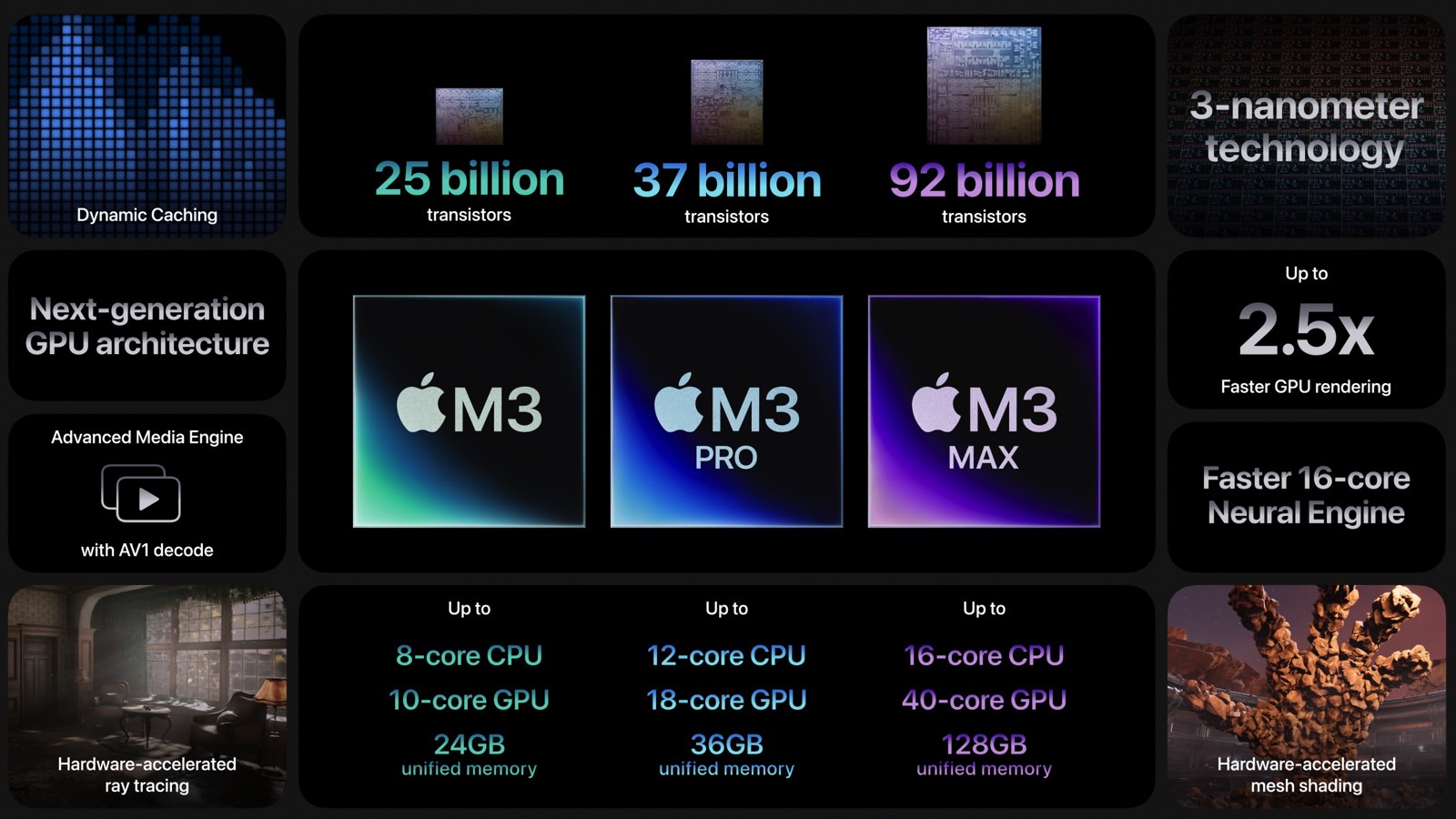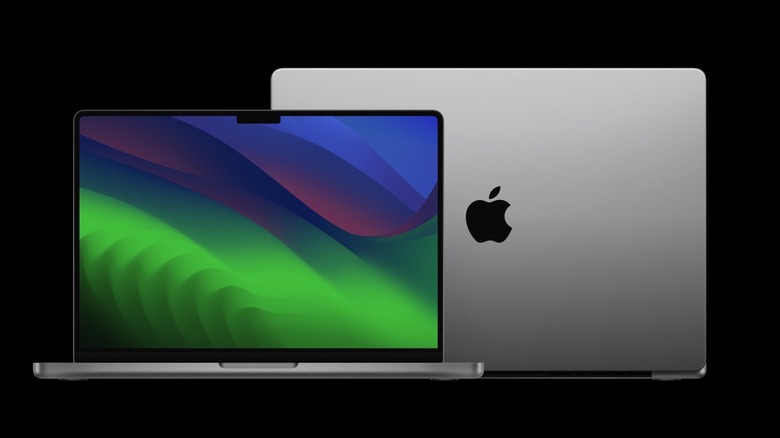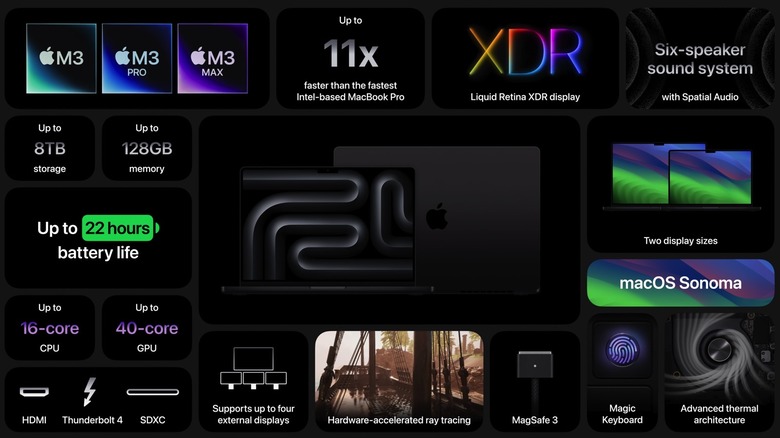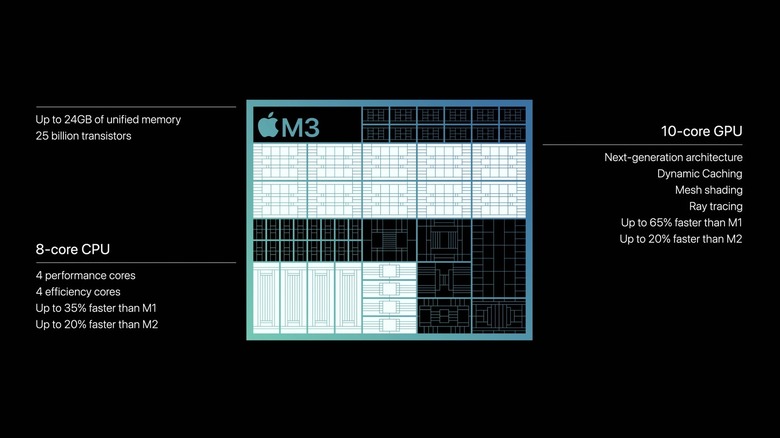The Base M3 MacBook Pro 14-Inch Is A Game-Changer
Rumors before the Scary Fast event that Apple held on Monday evening said the base 13-inch MacBook Pro will be refreshed alongside the high-end 14-inch and 16-inch versions. Those rumors changed tune as we got closer to Monday. They claimed there would be no update for the 13-inch laptop whose place in Apple's lineup many people question.
As soon as Apple's M3 MacBook Pro segment began, it was clear where Apple was heading with it. There wouldn't be a refresh for the 13-inch MacBook Pro because Apple had just discontinued it. Instead of reusing the old TouchBar, a portless design that nobody really wants, Apple did things differently this year.
Apple gave us an entry-level M3 MacBook Pro that rocks the design it introduced a few years ago. The entry-level MacBook Pro now comes in the same 14-inch shell as the more expensive versions and rocks the same hardware, except for the chip that drives it. But since the M3 brings significant performance and energy gains, the base M3 MacBook Pro just became a game-changer.
As someone about to choose his next MacBook between the 15-inch MacBook Air and the 14-inch MacBook Pro, I'll say the brand new M3 14-inch model is an incredible pitch.
The 14-inch model costs $300 more than the M2 13-inch MacBook Pro and 15-inch MacBook Air. But, for that $1,599 starting price, it offers tremendous performance, great battery life, the same great screen as the high-end MacBook Pros, and lots of ports.

M3 MacBook Pro performance
When it comes to performance, I'm glad to see that my gaming prediction came true. All M3 chips will offer massive GPU performance compared to their predecessors, bringing features like ray tracing to the Mac. That's something that developers will pay attention to. A feature that should come to the M3 MacBook Air, considering the base M3 MacBook Pro also features the same GPU powers as the high-end MacBook Pros.
In terms of performance, the M3 MacBook Pro is limited to the 8-core CPU and 10-core GPU M3 version, sure. But you can get up to 24GB of unified memory instead of the base 8GB. Storage-wise, you can upgrade to a 2TB SSD from the base 512GB model.
Battery life improvements
Before the Apple event, I wondered what sort of battery improvements we'd get from the M3 MacBook Pros, fearing that Apple wouldn't really move the needle. But I was partly wrong. The M3 Pro/Max versions of the MacBook Pros retain the 18-hour (14-inch) and 22-hour (16-inch) battery estimates of their predecessors.
But the M3 MacBook Pro gets a 22-hour estimate, on par with the 16-inch version. That's 2 hours longer than the M2 13-inch MacBook Pro it replaces. However, the M2 model still gets a 17-hour wireless web battery life estimate compared to 15 hours for the 14-inch version.
The M2 MacBook Airs come with an 18-hour battery life estimate, though I expect the M3 versions will also get better battery life quotes.
The mini LED screen
While the 13-inch MacBook Pro was stuck with a 60Hz LCD screen, the entry-level M3 MacBook Pro will pack the same 120Hz Liquid Retina XDR display as the more expensive MacBook Pros.
The screen delivers the same performance across the board. Apple updated the Liquid Retina XDR screen, which supports 1600 nits of peak brightness for HDR content and 1000 nits of sustained brightness. SDR content gets up to 600 nits of brightness, which is 20% brighter than before. The 13-inch variant topped at 500 nits of brightness.
MagSafe charging and the ports
Unlike the 13-inch model, the M3 MacBook Pro gets the new chassis that Apple introduced a couple of years ago. That means you get MagSafe charging and more ports: 2 USB-C Thunderbolt ports, one HDMI connector, and an SDHX card slot.
Comparatively, the 13-inch model only had two Thunderbolt ports.
With all that in mind, the M3 MacBook Pro is now a great challenger for the MacBook Air. The 14-inch laptop could very well become a best-seller.



